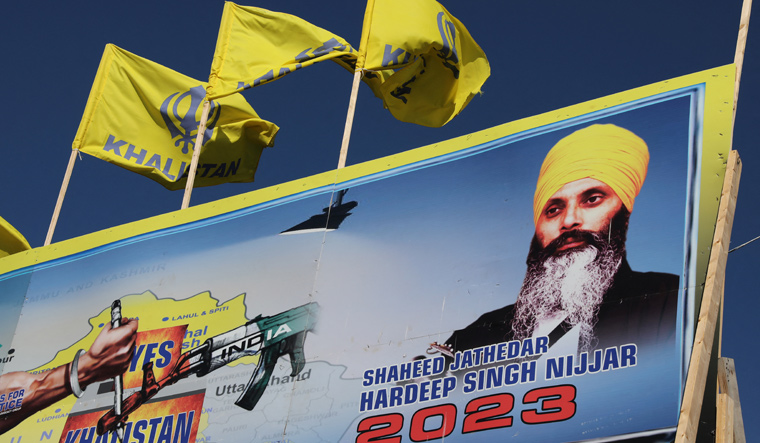By expelling the Indian diplomat amid ongoing investigation into the murder of Khalistani separatist leader Hardeep Singh Nijjar, Canada has taken significant step escalating tensions with India. Canada Prime Minister Justin Trudeau on Monday said that there are "credible allegations of a potential link" of Indian government and the assassination of Nijjar.
Hardeep Singh Nijjar was killed on June 18 outside a Sikh cultural centre in Surrey, British Columbia. Inter-gang rivalries was cited as the reason paving way for Nijjar's death.
Nijjar had affiliations with the banned Indian separatist group Sikhs of Justice (SFJ). He was known to be the second in command of the group after Gurpatwant Singh Pannun.
Nijjar is a native of Harsinghpur in Jalandhar, Punjab. He moved to Canada in 1996, where he initially worked as a plumber. In 2013-14 he had visited Pakistan, where he met Jagtar Singh Tara of Khalistan Tiger Force (KTF). His pro-khalistan activities from then had improved his financial standing as well.
In 2015, Pakistan's ISI allegedly roped him in to organise secrets training camps for Khalistani militants in Missigen Hills in British Colombia. According to intelligence reports, small arms training was also imparted in the camps.
He was also accused of working with the Babbar Khalsa International (BKI), Khalistan terrorist group, led by Tara.
Nijjar was included in a list released by the Indian government, naming 40 other designated terrorist. He was also booked in several cases in India between 2010-2016. He was booked in several cases including explosion in Patiala in 2010, plotting killings of religious leaders in 2016 and organising terror training camps on Canadian soil.
He was also detained once by the Canadian authorities after a Look out Circular (LOC) and a Red Corner Notice (RCN) were issued but he was later released.
What is known about Nijjar's death
Royal Canadian Mounted Police (RCMP) received a report of a shooting at the Guru Nanak Sikh Gurdwara in Surrey on June 18. Being rushed to the scene, Nijjar (45) was identified and had suffered multiple gunshot wounds inside a vehicle. According to police, Nijjar succumbed to his injuries on scene.
Later during the investigation conducted by the Integrated Homicide Investigation Team (IHIT), it was found that two suspects fled the murder scene in a vehicle. Investigators described the suspects as “heavier set males, wearing face coverings.”
Authorities later said that there was a third suspect as well. However, no arrests were made.
In July, investigators released information to the public of the believed route taken by the two suspects after the murder. Authorities later identified the vehicle which was waiting for the suspects as a Silver 2008 Toyota Camry.
Suspicions were raised by local community members that there may have been foreign interference in the murder of the Sikh separatist leader, reported Reuters.



